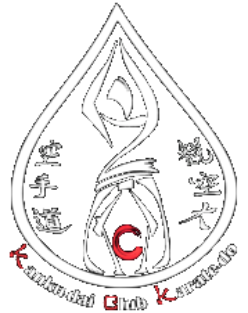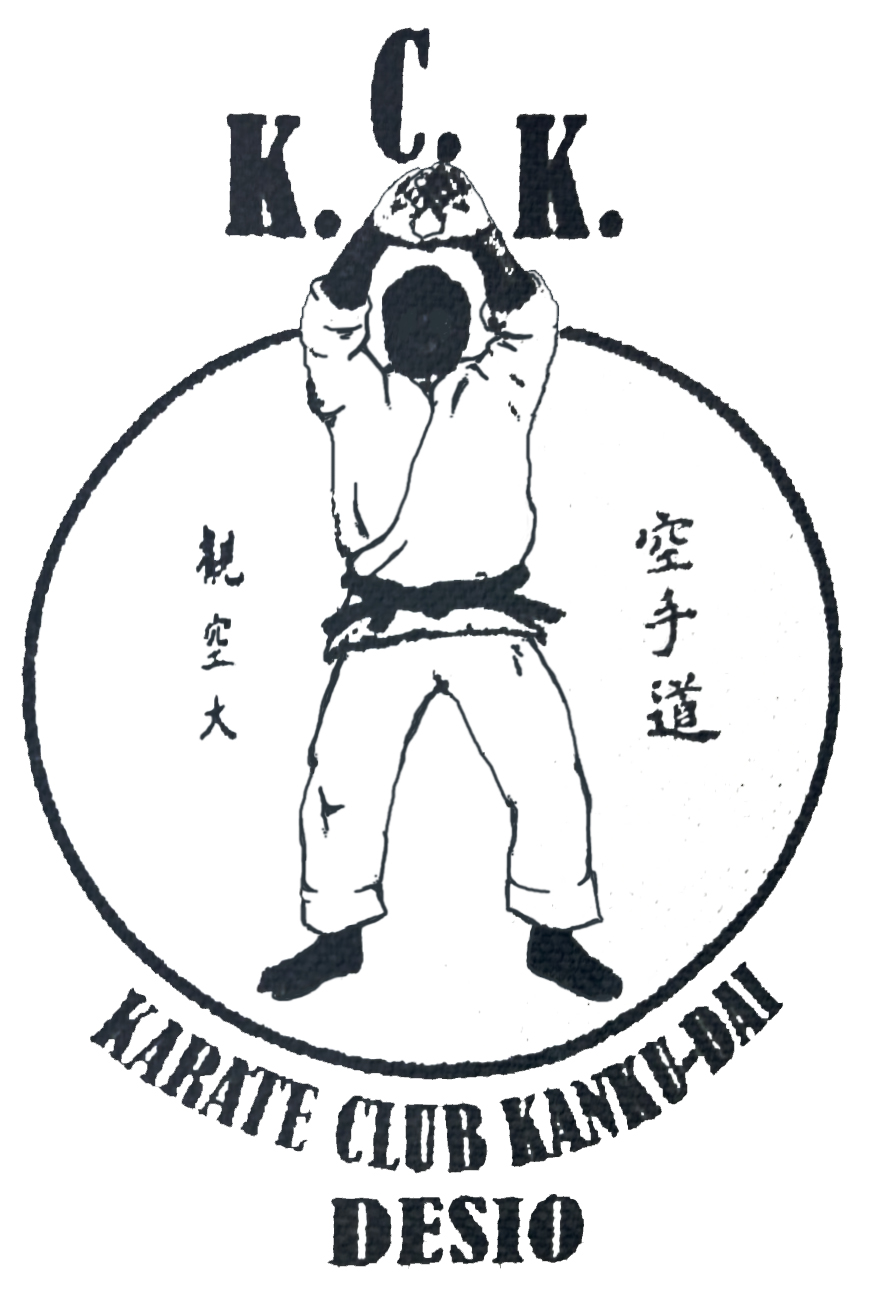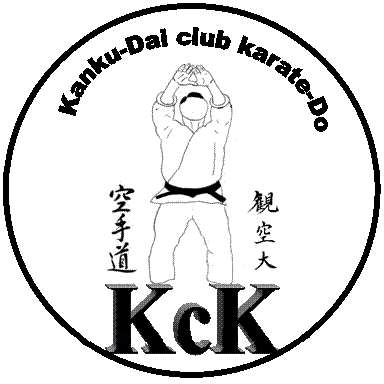Today, October 10th 1988, a Monday, under the guidance of young sensei Roberto Colombo, the Desio Karate-do Club Kanku-dai begins its activities, in the presence of two men and a woman, steady in their hearts and sound in their spirits. A new adventure unfolds, destined to last over time!
There it is. It all started thirty years ago. It’s a very long time, full of facts worth to be told, to be remembered for who was there and who weren’t. But not today; today we’ll talk about something else…
For our thirtieth birthday, we chose a little logo-restyling, not intended as you do when painting a house: just paint and it looks fresher. We went a little further, because a symbol is something important, something worth. It’s a mark. It could sound boring, but an emblem is first of all like a business card: it must represent yourself (that is, the school) in detail. It is representative of the philosophy you believe in. And behind karate-do there is a lot of philosophy.
So, we’ll try to show what symbols are hidden behind our symbol, and what principles they support. Yet a small gallery first:
so to see where it all came from.
The outline
Doing a little search on the Internet makes you realize that 99% of martial art clubs’ symbols are rounded. Know why? No? Well, me neither, but I suppose it is due to a… tradition reason. In fact, Japanese martial arts schools’ emblems are all, more or less, circular: a circle represents the harmony of universe, a very central concept in the Zen philosophy.
Almost everyone knows this symbol: 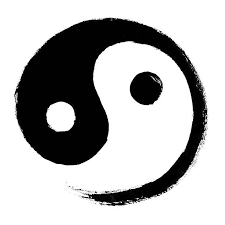 (陰陽, yinyo, aka yin & yang). It represents the union of opposites, the duality, in short the equilibrium of all existing things. Grossly speaking, this inspired martial arts’ people to shape their own emblems.
(陰陽, yinyo, aka yin & yang). It represents the union of opposites, the duality, in short the equilibrium of all existing things. Grossly speaking, this inspired martial arts’ people to shape their own emblems.
What about us? Well, KCK’s emblem is rather one of a kind, since it is bounded in a water-drop. Why? Because of the old Latin saying “Gutta cavat lapidem”, that is “A water drop hollows a stone”, idea of perseverance which also features in our motto:
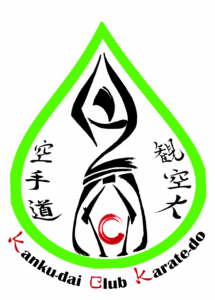
“Training for a thousand days is just training,
Training for a ten thousands days is discipline!”
Oh, one more thing: a water drop concerns water (!). That doesn’t mean that KCK has a damp gym (even if we’ve been flooded in the past!), but instead that water is fluid, adjusts itself, can be ploughed through and… can have a tremendous power! You’re not gonna believe it, but… a karate-ka is the same! At least, in our vision of this awesome martial art. Not only on the tatami, but above all in life.
The small figure
The (wise and) skilled hand of our favourite artist could draw a person out of some Japanese writings: father (父, chichi), woman (女, onna), and child (子, ko). Yes, we know that at this stage it is quite hard to find them, but, believe me, it was exactly this way the brainstorming proceeded!
The small man represents Taiji Kase sensei, even though after… a hefty diet! Kase-sensei was in facts much more… round shaped, say halfway between the Marshmallow man and a snowman. Nonetheless, his karate-do was of extreme quality, perfectly built upon such a less-then-athletic body. What does it teach us? That anyone, over years, adjusts and builds his/her own karate-do; that you don’t need to be super-sinewy to practice karate and that… it’s better having some flesh stuck to your bones than look like a skeleton! It makes you look nicer. Ask Santa!
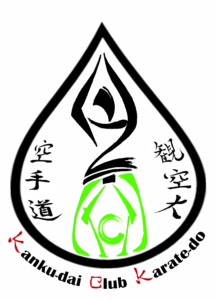
It’s not over. There’s something hidden in our stylization of Kase-sensei, something that you can’t immediately spot. For this reason one must watch carefully (another thing to learn!). A weird c is drawn in between the man’s legs, which, hey wait!, they’re not just legs but they are forming a writing… it’s KCK, isn’t it? Hands up who saw it…
And, if you go on watching carefully, you could even see a small house roofing the weird c. For us, it means that the dojo (that is the gym, is written 道場) is a place you can call home, which must be taken care of and, above all, respected.
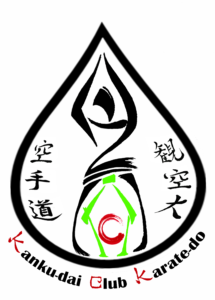
Again on the weird red c: if you search the Web, you’ll find that it closely resembles the Enso symbol (円相), one of the fundamental symbols of Zen Buddhism (to which, for historical reasons, all Japanese martial arts are connected). What is Enso? Again: harmony, union and completeness. As should be every karate-do technique! Ok, ok, we shouldn’t beat about the bush… Actually, we just needed a fancy way to picture an acronym; in the end, even the Enso turned out to be useful. Everything you learn (even in karate-do), sooner or later comes in handy!
The name
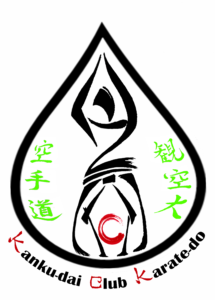
Last, but not least, the most important thing: our school’s name, which is also sewn onto the jackets of our dear practitioners! It’s made of two writings, six Japanese characters on the whole, which are named kanjis. The left one is spelled kara-te-do, and we shouldn’t tell what’s doing there, while the other one is read kan-ku-dai. It is the name of one of the 26 katas acknowledged in shotokan style, but obviously it is also the name of our club! All here? Of course not.

Kan-ku is made by two kanjis, respectively “outlook” (観) and “sky” (空).
The meaning is clear, isn’t it? “Looking at the sky”, or rather, “looking beyond”. It is an invitation we call for everyone, both as a karate-do school and as, above all, human beings: never stop to your first impression, be aware that there can always be something more, beyond. You only need to pause for a moment and watch: outlook indeed. Contemplating requires calm and patience, fundamental skills for a karate-ka.
On the tatami, then, “looking beyond” takes up another sense, even more martial (but you’ll discover it over the years!): it means to have an action plan, to have already clear in mind that a technique never comes alone, but always “goes beyond”, to a precise and ultimate purpose. You know, this is true both for training and fighting. But that’s another story…
